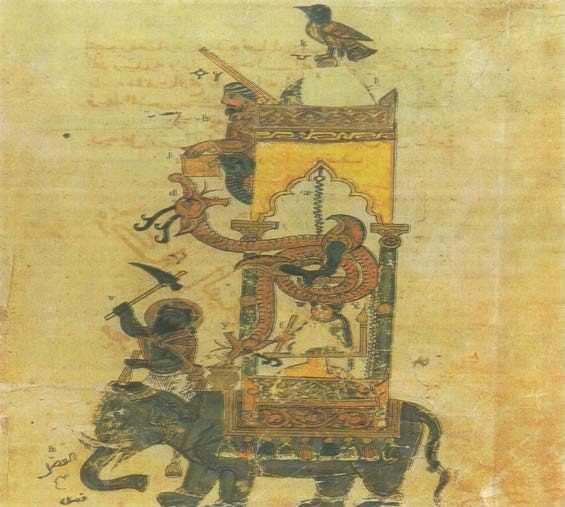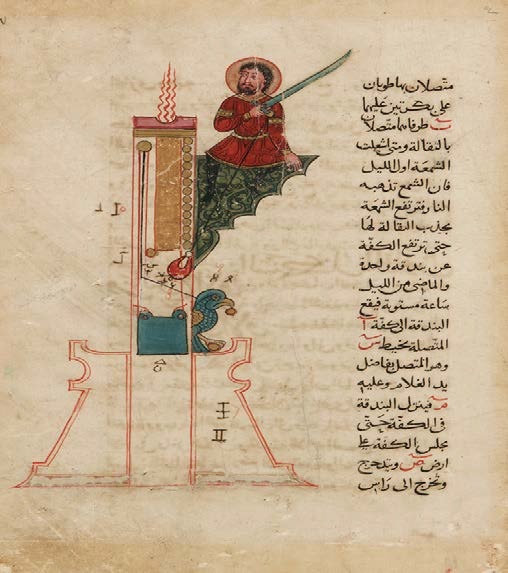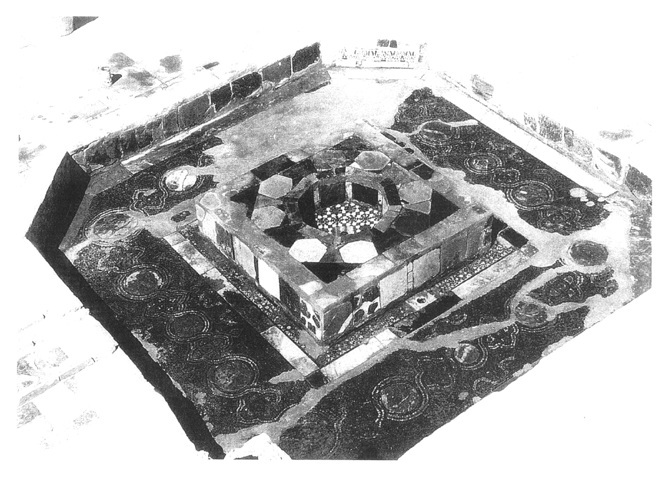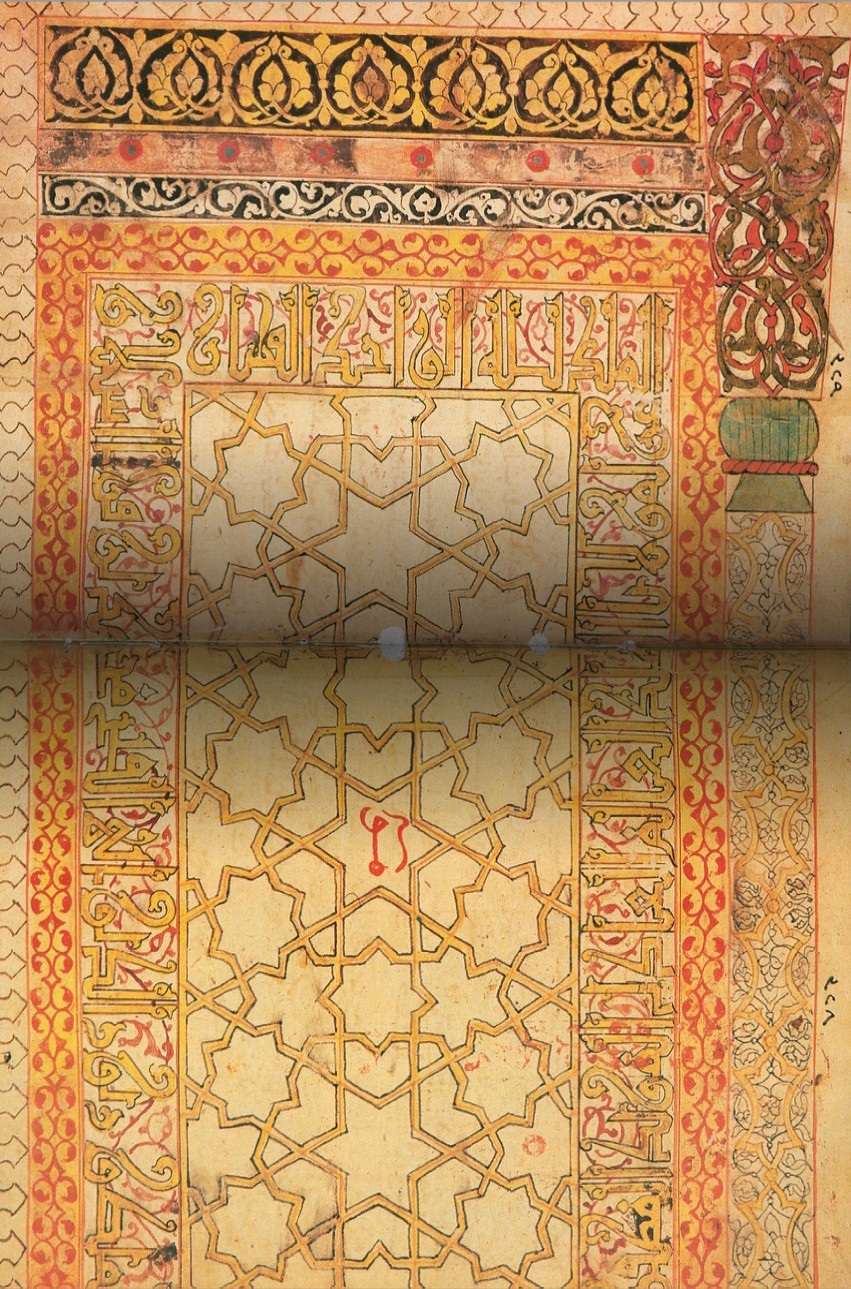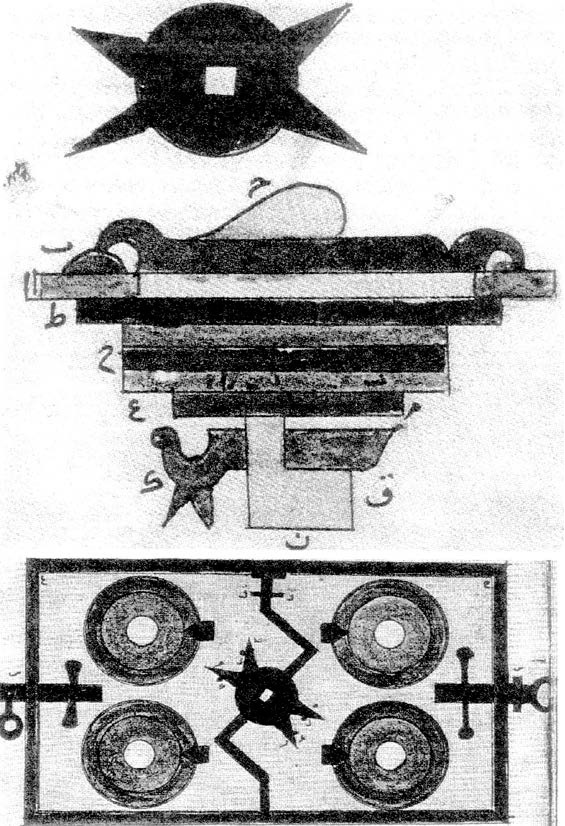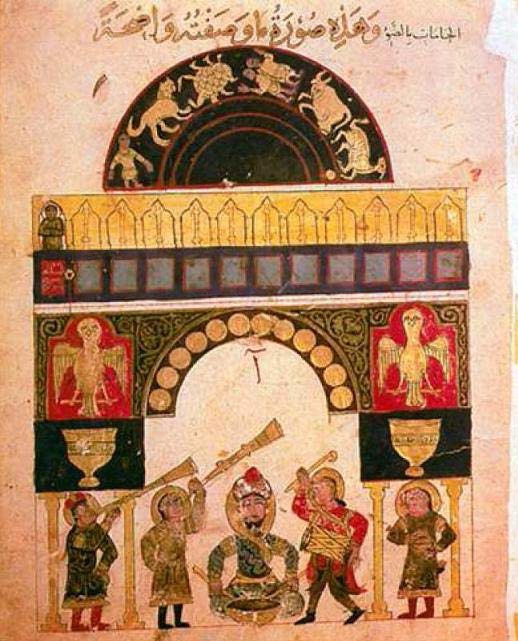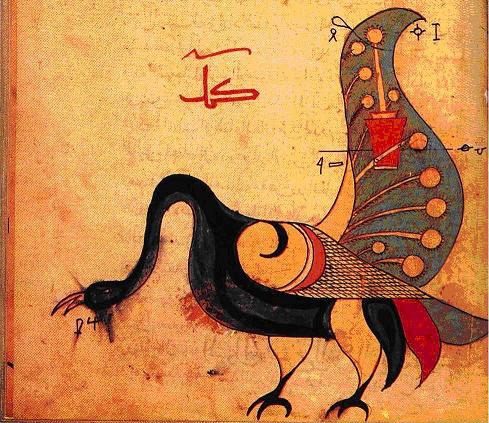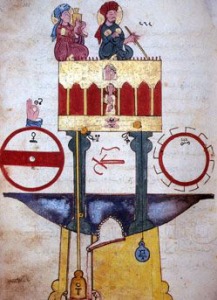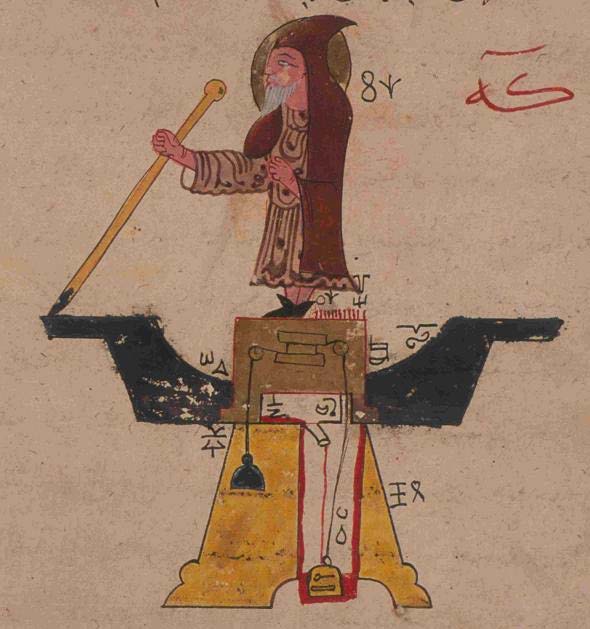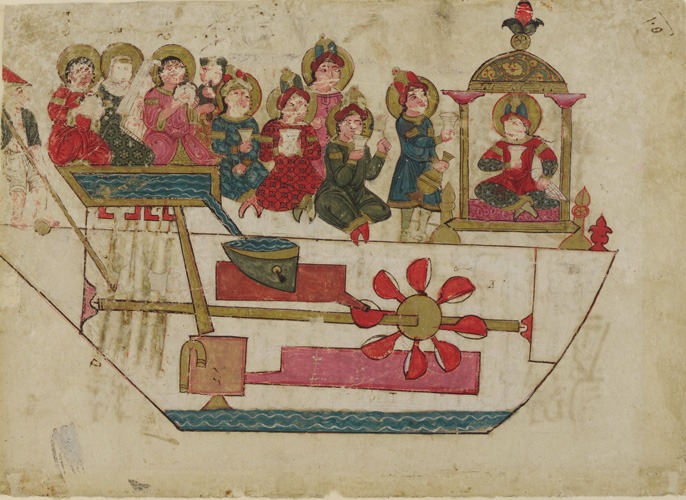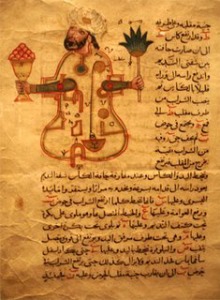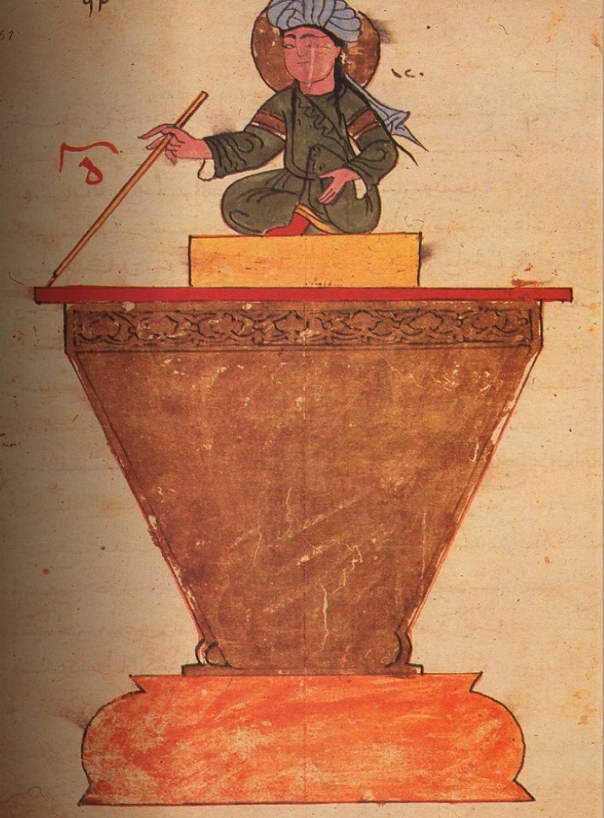
Scholar of Mechanics. (Born
in
Cezerî’s work consists
of six parts. The first four parts have each ten chapters and the last two
parts each five chapters. These chapters are on water clocks, candle clocks,
plates and water-bottles used for feasts, plates used to wash hands and
bloodletting, fountains and automatic music devices which move with mechanical
methods, water pumping machines and various devices. Each device’s shape is
explained in the book using a colorful ink and a detailed instruction whose
details are also shown with different colors. Besides Arabic letters are used
in the shapes and some parts of them are signed, through references in the text
to these signs, understanding of the text is made easier. In some copies “ebced
(T.N. Arabic metaphysical digital system)” values of these letters were
analyzed and in other copies a secret system of letters was used which could
not be explained until the present. The text contains a general explanation of
devices, production of their parts due to their order and the method of their
installation. Finally some information is given on the working principle of that
device. Aside from all these, some copies of the book contain so beautiful
artistic works that art historians would be interested.
Some chapters of the
work were translated into German by E. Wiedemann and F. Hauser for the first
time and published in various magazines between 1908 and 1921 as articles. About fifty years later than this work, Donald
R. Hill translated the whole book into English in 1974 and published it as one
volume with explanatory notes. (The Book of Knowledge of Ingenious
Mechanical Devices, Dordrecht 1974).Researchers took the text called
“Bodleian copy” which is in Oxford Bodleian Library as basis out of its
fourteen copies. Ahmed Yûsuf el-Hasan later took three copies in
Two of the copies of
the work which were not known until the present contain some drawings which
have dimensional incoherencies and complicated points about the placement of
tools but analyzed together with the text, it can be said that these problems
were overcome and Cezerî reached his goal. One of the water clocks explained in
the book was reconstructed for the World Islamic Festival in
Cezerî and his book
were introduced to the world of science with these works. There are several
interpretations and evaluations on them.
Cezerî was aware of the
fact that he was the continuation of an engineering tradition starting from the
Hellenistic Age, going through the XIII. Century and reaching the Islamic
World. This tradition which started with Musaoğulları in the Islamic world
reached its summit with Cezerî. Cezerî claimed that the monumental water clock
built by him was based on the water clock built by Pseudo-Archimedes. In the
fourth part of the book which was on his works of fountains he gave information
about Musaoğulları and about the work of the Byzantine Apollonios on automatic
music devices. He also mentioned some devices built by unknown people. Cezerî
essentially claimed to be an engineer and not an inventor. He believed that his
duty was to improve devices built by others. Seen from this perspective, theory
and practice were of the same weight in his work and according to some authors
practical knowledge and laws were of more weight in order to build tools.
Indeed he particularly states that his work has practical uses in daily life.
Water and candle clocks are
sophisticated devices to express Cezerî’s skills. Water supply machines are
more important in economic terms but the book did not emphasize them as much as
clocks. Information on metal casting technique proves an advanced level of
engineering. Cezerî’s tools function with gravity and this force is gained
through a falling weight, a buoy in an emptying plate or a sinking object. Cezerî
defined the machine parts he used and methods of their production in depth. The
most important ones among his works on machine parts which largely belong to
European engineering terminology nowadays are: Cone valves, brass and copper
casting in closed sandbags, balance of wheels, use of wooden templates, use of
paper models of tools, adjusting sluiceways to flow water, use of wood in
layers, use of intake pipe in real terms, plates which empty their water at
regular intervals and circle shaped gearwheels. It is an historical fact that
some of these were almost reinvented in
One of Cezerî’s machines, a water pump
which works with a water wheel, directly contributed to the development of
modern engineering. This machine is very important in terms of, a) application
of double-action principle, b) transforming the whirl action to backwards and
forwards moves, c) the first known use of intake pipe. Therefore it can be
regarded as the first sample of steam machine and lift and force pump. The
wheel moved by the flowing water moves a gearwheel in the vertical level in the
mentioned machine and this gearwheel moves another gearwheel in the horizontal
level. There is a vertical pin near to the horizontal gearwheel. A stick with a
hole in it and connected to another pin on the other edge is connected to this pin
and this stick is connected with piston rods of pumps. So when the horizontal
gearwheel starts to move the stick with the hole moves with an angle and the
piston rods run the pumps moving backwards and forwards.
Aside from automatic systems which function on their
own, Cezerî’s most important contribution to
automation is that he created the balance which functions automatically using
the water force and pressure effect. Another work of him is the famous Sun
Clock in the
REFERENCE: Zeki Tez / Otomatlar-Mekanik Oyuncaklar Tarihi (Doruk Yayımcılık, İstanbul
2008), "Eb-ül-İzz-Cezerî Kongresi, Bildiriler", EÜ Gevher Nesibe
Tıp Tarihi Enstitüsü,
